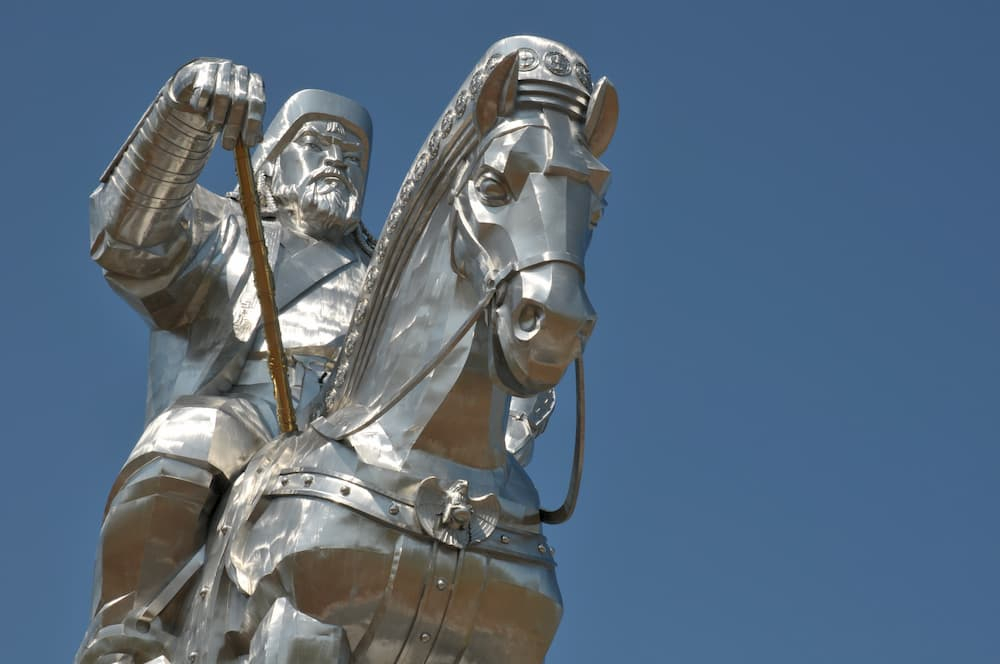
The Development of Confucianism in the Yuan Dynasty
Splendid
Chi Culture
Topic
The Development of Confucianism in the Yuan Dynasty
 Listen to this article
Listen to this articleThe Yuan dynasty was founded by the nomadic Mongols who adopted many Han (漢) customs after taking the Central Plains. Chinese culture was long dominated by Confucianism. Many Khans, from Genghis Khan to Emperor Renzong (仁宗) of Yuan, learned about Han culture through translation. The nobility, including Emperor Taizong (太宗) (Ögedei Khan), Emperor Shizu (世祖) (Kublai Khan), Emperor Renzong (Ayurbarwada Buyantu Khan), and Yelu Chucai, a Khitan royal descendant, all contributed to the development of Confucianism in the Yuan dynasty.
During the rivalry with the Southern Song dynasty (宋朝), Ögedei adopted several Han-inspired governance measures, including the centralised government system and the cultural and educational system, which were specially set up for the governance of the Han ethnic group in North China. Confucianism in the Yuan dynasty was dominated by the philosophy of the Cheng-Zhu school. In 1235, Ögedei Khan launched an attack on the Southern Song regime and ordered Yang Weizhong (楊惟中) and Yao Shu (姚樞) to seek talent for the government. It was when masters of Confucianism including Zhao Fu (趙復) were sent to Yanjing (燕京, the capital of the Yuan regime, now Beijing, 北京), where the Academy of the Great Ultimate (太極書院) was established. In addition to spreading the doctrines of the Cheng-Zhu school, Zhao also systematically disseminated the inheritance of Confucianism from Fuxi (伏羲), Shennong (神農), the Yellow Emperor (黃帝), Emperor Yao (堯), Emperor Shun (舜), Yu the Great (禹), Tang of Shang (商湯), King Wen of Zhou (周文王), King Wu of Zhou (周武王), Duke of Zhou (周公), Confucius (孔子), Yan Hui (顏回), Zeng Zi (曾子), Kong Ji (孔伋), Mencius (孟子), and Zhou Dunyi (周敦頤) to Zhu Xi (朱熹).
The Confucian education of the central government was represented by the National Imperial Academy (國子學) established by Ögedei Khan. It aimed to educate the children of senior officials of both the Mongol and Han ethnic groups such classics as the Classic of Filial Piety (《孝經》), the Great Learning (《大學》), the Doctrine of the Mean, the Analects (《論語》), and the Mencius (《孟子》) in both Mongolian and Chinese. During the reign of Kublai Khan, the National Imperial Academy was recognised as the official educational institution under the central government, aiming to cultivate Chinese scholars with traditional knowledge and good etiquette. A few Confucianism schools, spreading across different towns, were also established. In terms of local education, the Yuan dynasty inherited the academy teaching from the Song dynasty. There were many of these academies in the Yuan dynasty, with Confucianism as the main teaching content. Furthermore, it also followed the central education system, like the National Imperial Academy, to teach the philosophy of the Chen-Zhu school. In addition, the Yuan Government also established official Confucianism schools in administrative regions of different levels. Kublai Khan proposed to set up private schools for each She (社, each She was composed of 50 households). At that time, there were more than 20,000 private schools set up in the country. During the slack season in farming, children were enrolled in private schools to learn the Classic of Filial Piety and the Elementary Learning (《小學》), and later the Great Learning, the Analects, and the Mencius. Kublai Khan gained a certain understanding of Confucianism through translation and decided to establish a central and local system to carry forward its teachings, which contributed to the development of Confucianism.
The imperial examination system of the Yuan dynasty was also a contributory factor of the development of Confucianism. The Yuan Government paid little attention to the imperial examination at the beginning of its establishment. It was not until the second year of Emperor Renzong’s reign (1313) that the imperial examination system was officially promulgated. Focusing on Zhu Xi’s philosophy, the examination paper was designed based on the Four Books and needed to be answered according to Zhu Xi’s The Four Books, with a Collection of Comments (《四書集注》). As the Four Books were the designated books in the imperial examination, many works about them started to emerge at that time. To favour the northern tribes, a quota system both for the number of candidates and degrees awarded was instituted. Candidates were enrolled on two lists with the Mongols and Semu-ren ( 色目人, people who came from Central and West Asia) on the left and the Han and Southern Chinese on the right. Emperor Renzong had a decent knowledge of Han culture. He studied the Comprehensive Mirror to Aid in Government (《資治通鑑》) and ordered to translate it into Mongolian for teaching and reading. He was also good at appreciating poetry and calligraphy. After that, the successors, including Emperor Yingzong (英宗), Emperor Taiding (泰定), Emperor Wenzong (文宗), and Emperor Shun (順帝), all showed an interest in Han culture. Furthermore, they often wrote inscriptions and poems to reward officials. Emperor Wenzong enjoyed reading, painting, and calligraphy and often discussed calligraphy and art with Confucian scholars, while Emperor Shun required his son to read the Classic of Filial Piety and the Four Books, and practice calligraphy.
Yelu Chucai was a descendant of Yelu Bei, the eldest son of Emperor Taizu of Liao (遼太祖), whose family was famous for sinicisation. During the reign of Ögedei Khan, he attempted to adopt the Han approach in politics, with the concept of “governing the country with Confucianism”. He carried forward Confucianism with practical actions, hoping that the Great Khan of Mongolia could be immersed in Han culture and take it as the basis of their governance. His important actions included establishing a tax collection system, setting up household registration systems for residents of the conquered cities, restoring the Confucian Temple system and the tradition of Duke Yansheng (衍聖公), setting up two units to compile classics and history, inviting famous Confucian scholars to the palace to give lectures, and selecting more than 4,000 Confucian scholars through examinations. All of these measures contributed greatly to the application and development of Confucianism.





